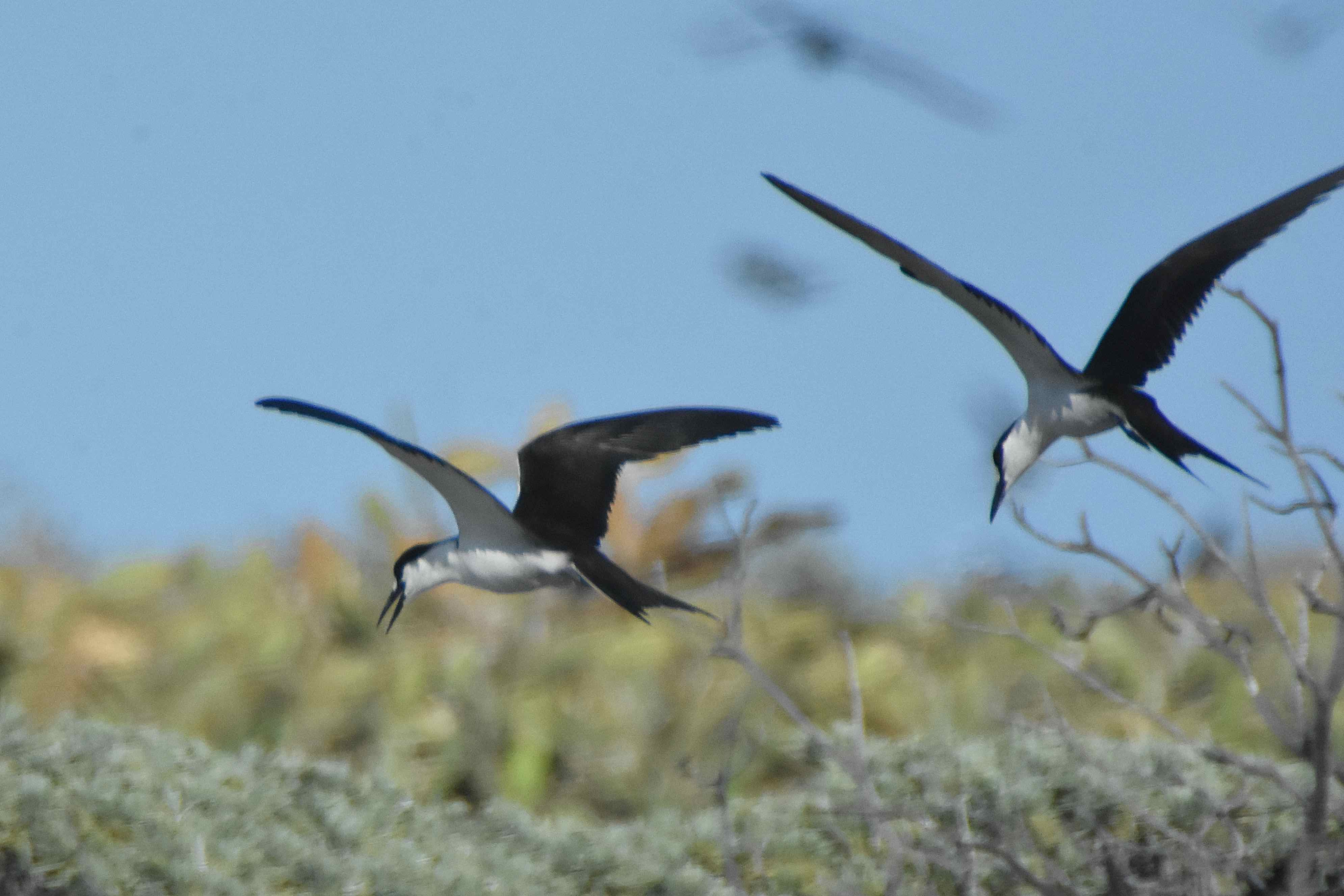
Sooty tern, photographed at Bush Key, Dry Tortugas National Park, Monroe County, in April 2017.
Travel the tropical seas of the world and you're likely to encounter this guy, the sooty tern, Onychoprion fuscata, pretty much anywhere you go. But if you want see him up close, you're going to have to visit one of the islands where he breeds. In the North America, that means the Dry Tortugas and Bush Key.
Sooty terns are pelagic birds, meaning they spend most of their lives at sea. They come to terra firma only for a few months out of the year during nesting season. And even then, they're not heading for the mainland but rather some remote, offshore, tropical island. The only other places in the United States where they breed are a few small islands in Hawaii.
Sooty terns are striking in their looks, white underneath and black or dark gray above, with a black bill and white forehead. They are fairly large as terns go, with a body between 14 and 16 inches long and a wingspan that can exceed three feet, perfect for a life of nearly perpetual flight.
They patrol the seas off our eastern coasts from roughly North Carolina south to Florida to Texas and Mexico. Come February, they start to gather by the thousands in the skies over Bush Key, where they'll find a mate and raise the next generation of sooty terns. Bush Key is shown in the middle photo below.
These are common birds. Their range literally spans the tropical waters of the globe; their population is estimated to be between 21 million and 22 million. The Audubon Society estimates that more than 500,000 have been banded on Bush Key alone since the mid-1950s.
Sooty terns eat mostly fish and squid. They'll spot large schools of small fish driven to the surface by larger predatory fish, swoop in and pick their prey off the top of the water, rarely plunging. Fisherman have learned to use sooty terns to find fish.
They are known to sleep while flying, albeit in one- or two-second micro naps. As noted above, they'll arrive at their breeding island about two months before actually nesting. During this time, they'll spend days foraging in the surrounding waters but return to land for the night. They are ground nesters, scraping out a small hole in the sandy soil and lining it with some plant material. The site is usually places with dense, scrubby vegetation, like the paddle cactus and sea lavender on Bush Key. Both males and females engage in the work.
Females can lay as many as three eggs, but almost always only one. Both parents share sitting duties, which on a hot sunny day actually might mean shading it with their bodies to keep it cool. The egg will hatch in about a month; the young tern will be able to fly in about two months but may stay with the parents for a few weeks more.
Many will migrate to the waters off West Africa, where they'll spend the next six years maturing into adults. They'll make the trip back to the waters off Florida but might not reproduce for several more years. Sooty terns can live well into their 30s.
Despite their vast numbers, sooty terns are considered a species of special concern in Florida because of the single nesting site within the state. Bush Key, by the way, is closed to the public February to November, the time when the terns and another nesting species, the brown noddy, are present, but the birds can be viewed with binoculars from neighboring Garden Key. The photos on this page were taken with the equivalent of a 1200mm lens, double our usual maxium capacity.
Sooty terns are members of Laridae, the family of terns and gulls.
Bush Key, Dry Tortugas National Park



